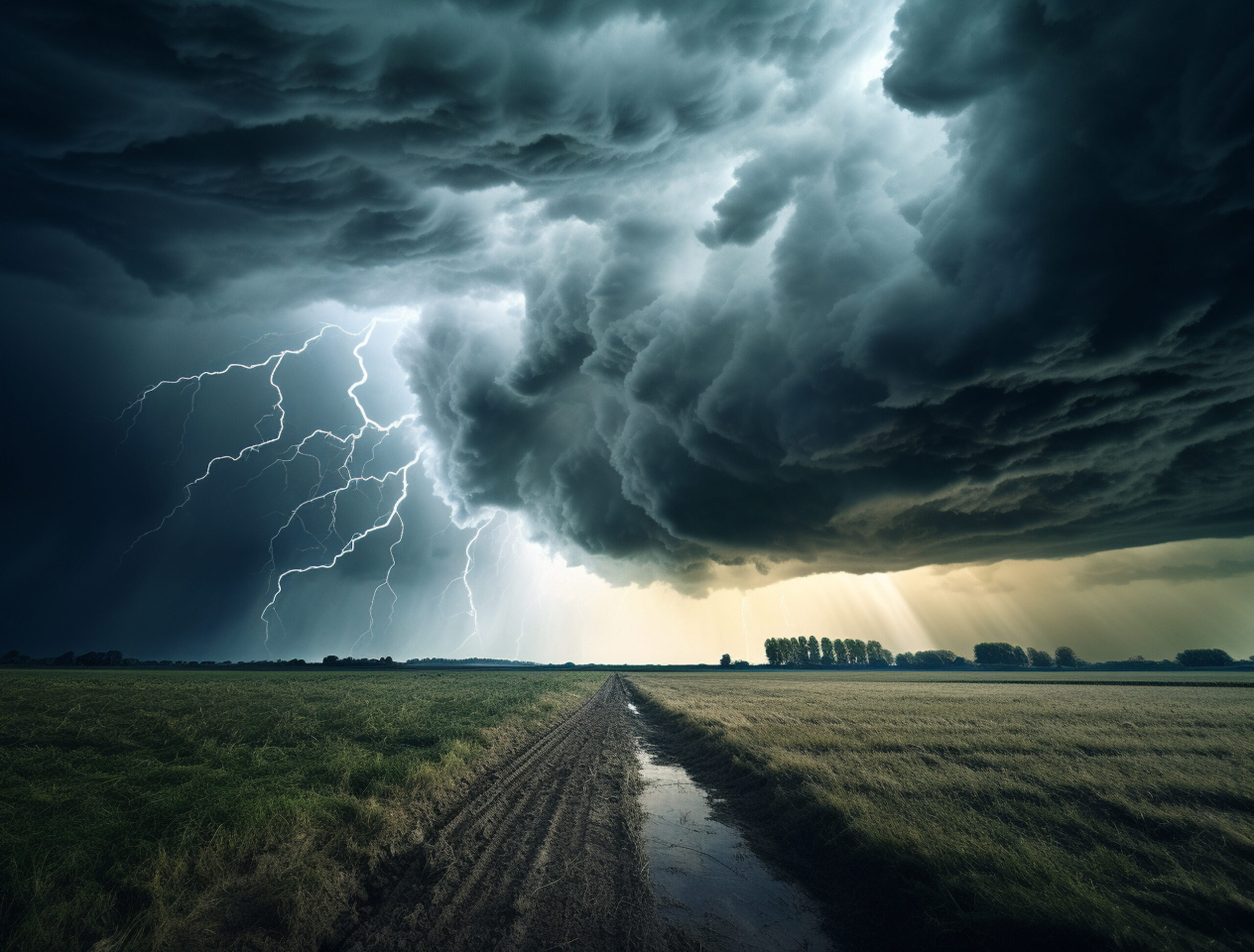1. Secure Outdoor Items: Bring in or secure outdoor items, such as furniture and other items that could become projectiles in high winds.
2. Trim Trees and Shrubs: Trim back any branches or limbs that could fall onto your home during a storm.
3. Inspect Roof and Gutters: Check your roof for any loose shingles or areas needing repair. Clean out gutters to prevent water buildup and potential flooding.
4. Seal Windows and Doors: Ensure that all doors and windows have proper seals to prevent water from entering. Installing storm shutters or boarding up windows for extra protection can prevent damage.
5. Reinforce Garage Doors: Garage doors can be vulnerable during storms. If you live in a high-risk area, reinforce them with braces or replace them with hurricane-resistant doors.
6. Check Sump Pump: If you have a basement, ensure your pump is in good working condition to prevent flooding.
7. Backup Power: Consider investing in a generator to provide backup power in an outage. Make sure it’s properly installed and fueled.
8. Emergency Kit: Assemble an emergency kit that includes essentials such as water, non-perishable food, batteries, flashlights, first aid kits, flashlights, batteries, and any necessary medications.
9. Evacuation Plan: Familiarize yourself with evacuation routes and have a plan if you need to evacuate. Make sure everyone in your household knows the plan.
10. Secure Important Documents: Keep important documents such as insurance policies, identification, and medical records in a waterproof container or safe place.
11. Stay Informed: Monitor weather updates from reliable sources and stay informed about any evacuation orders or emergency alerts in your area.
12. Protect Electronics: Unplug electronic devices and appliances to prevent damage from power surges.
13. Prepare for Pets: Make arrangements for your pets in case you need to evacuate.
14. Prepare supplies such as food, water, medications, and carriers.
15. Secure Generators and Fuel: If you’re using a generator, place it in a well-ventilated area to prevent carbon monoxide poisoning, and store fuel in a safe location.
By taking these precautions, you can help minimize the impact of a storm on your home and ensure your safety and the safety of your loved ones and pets.

